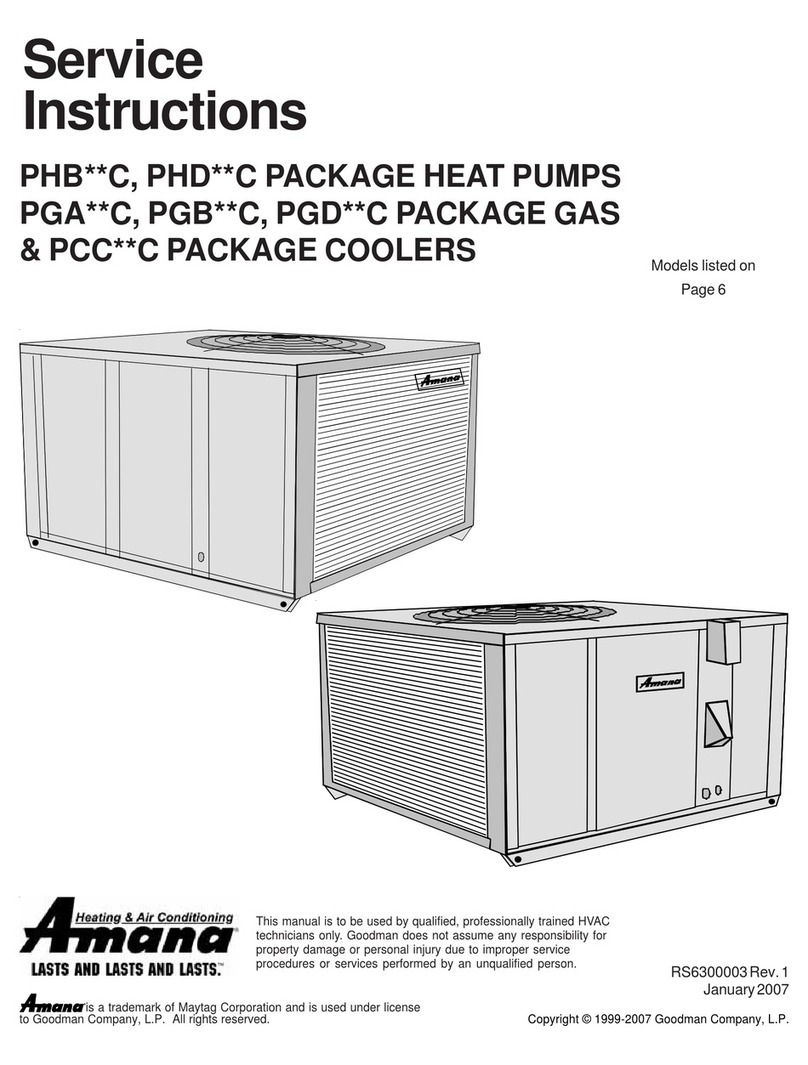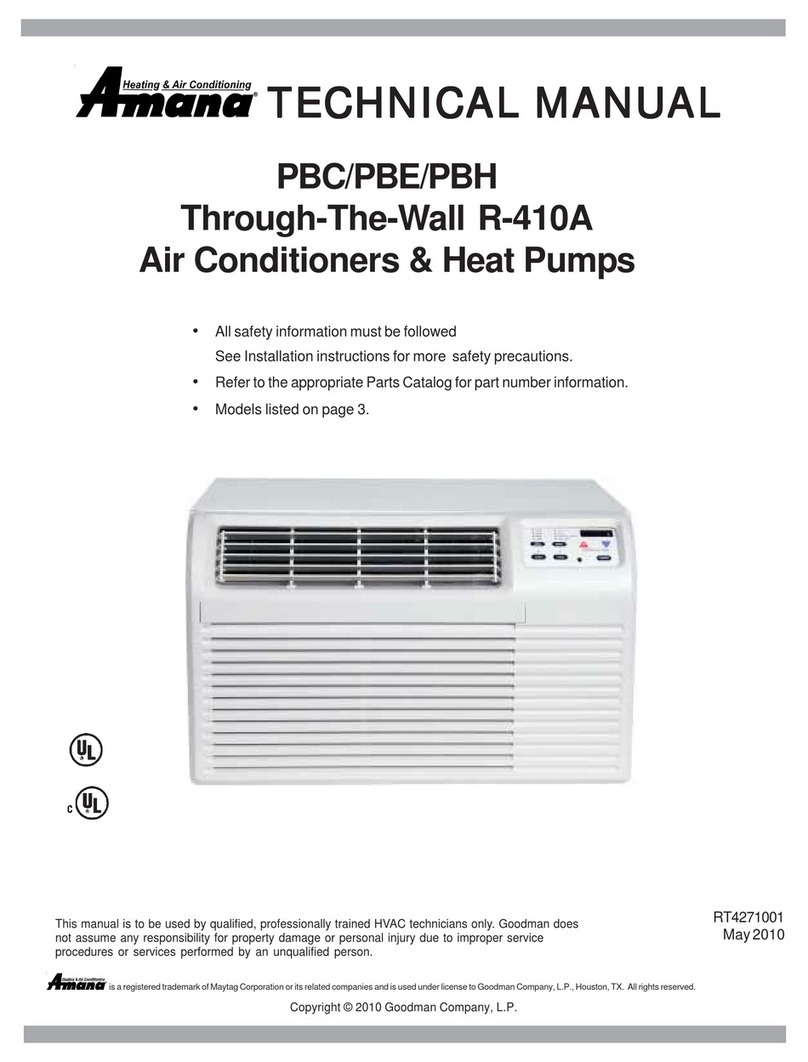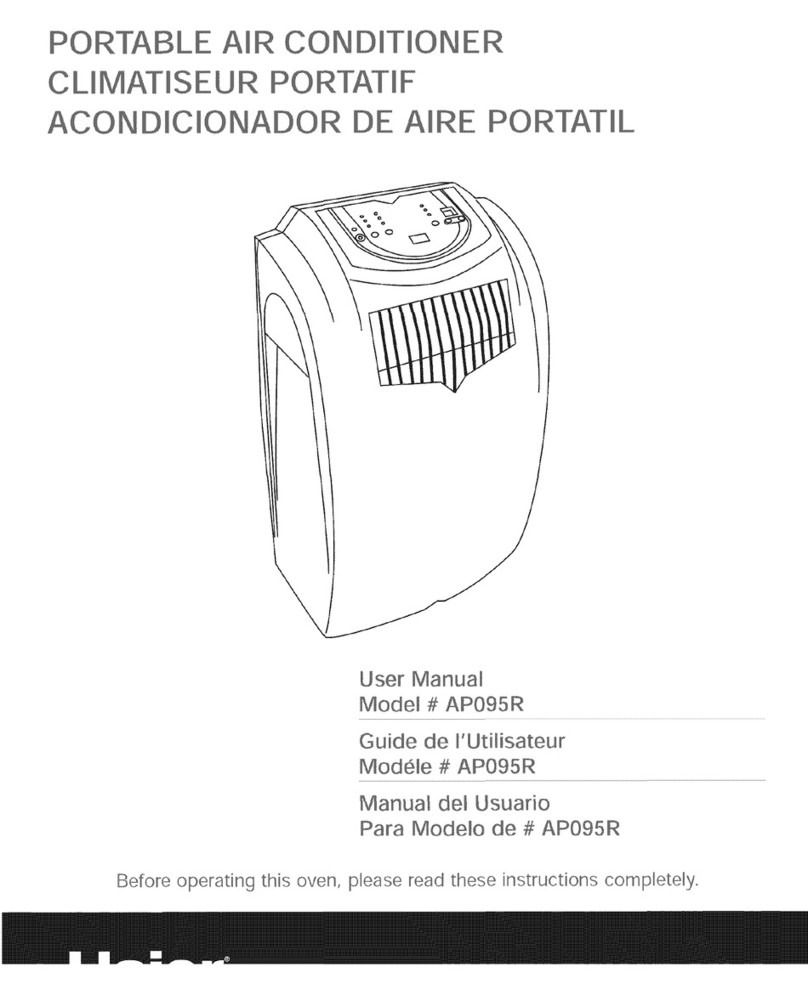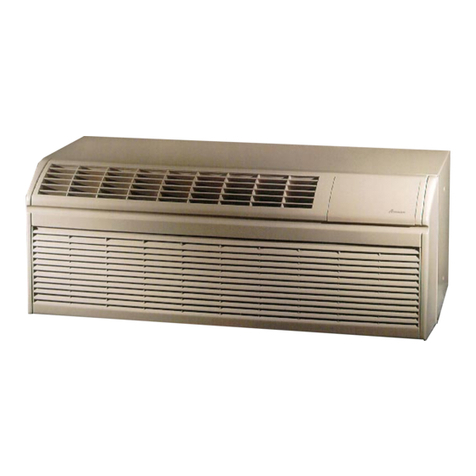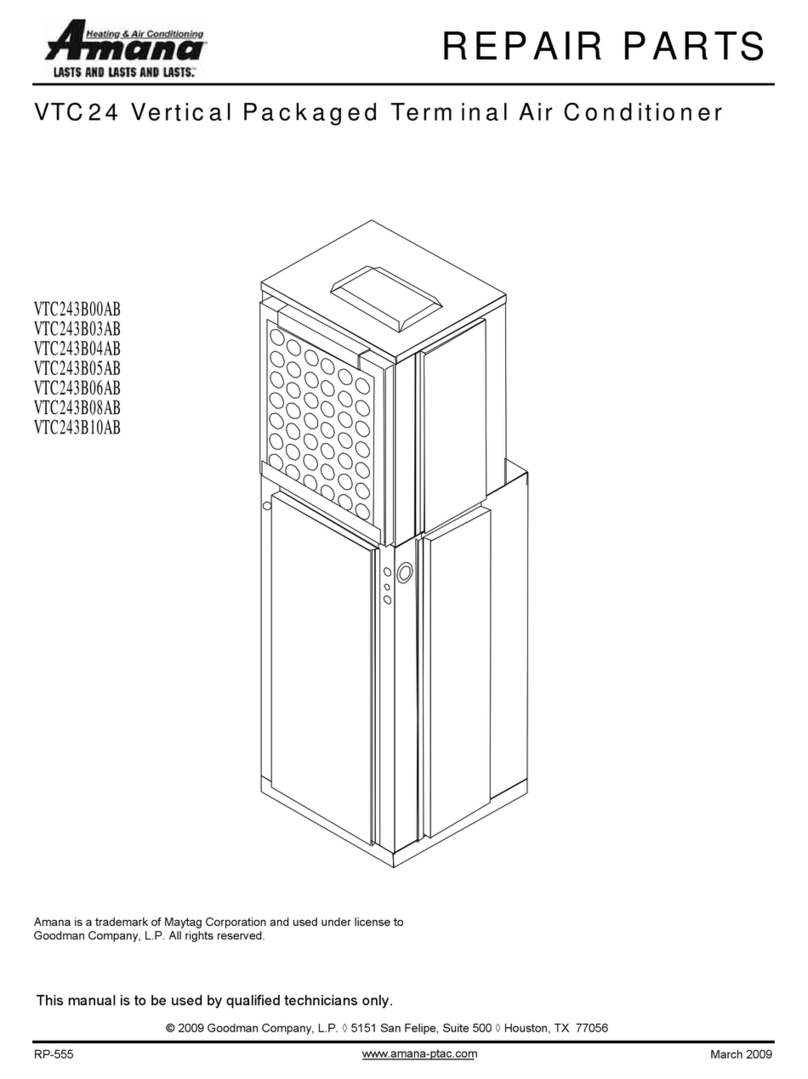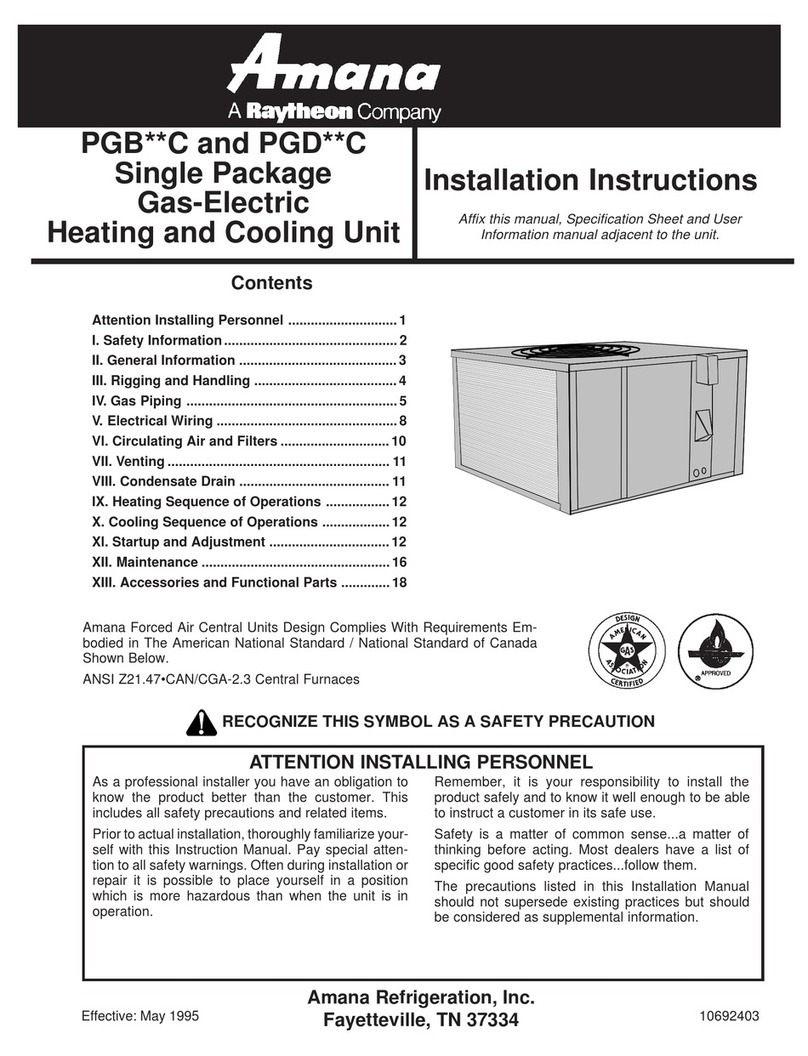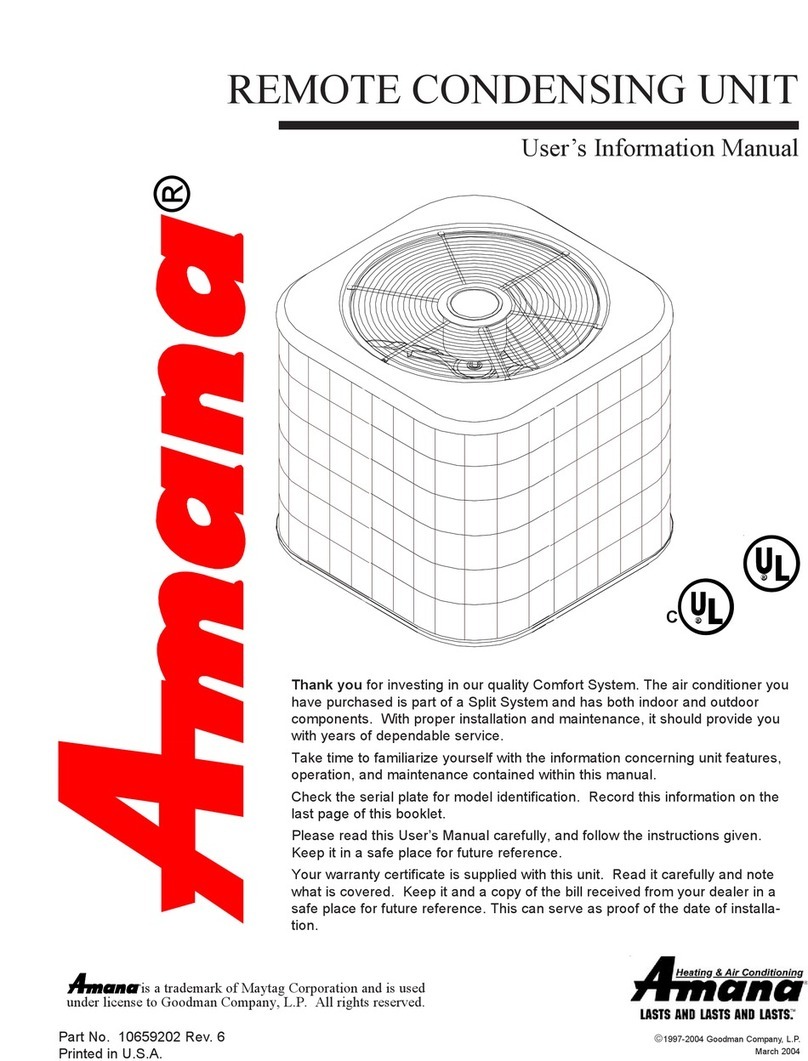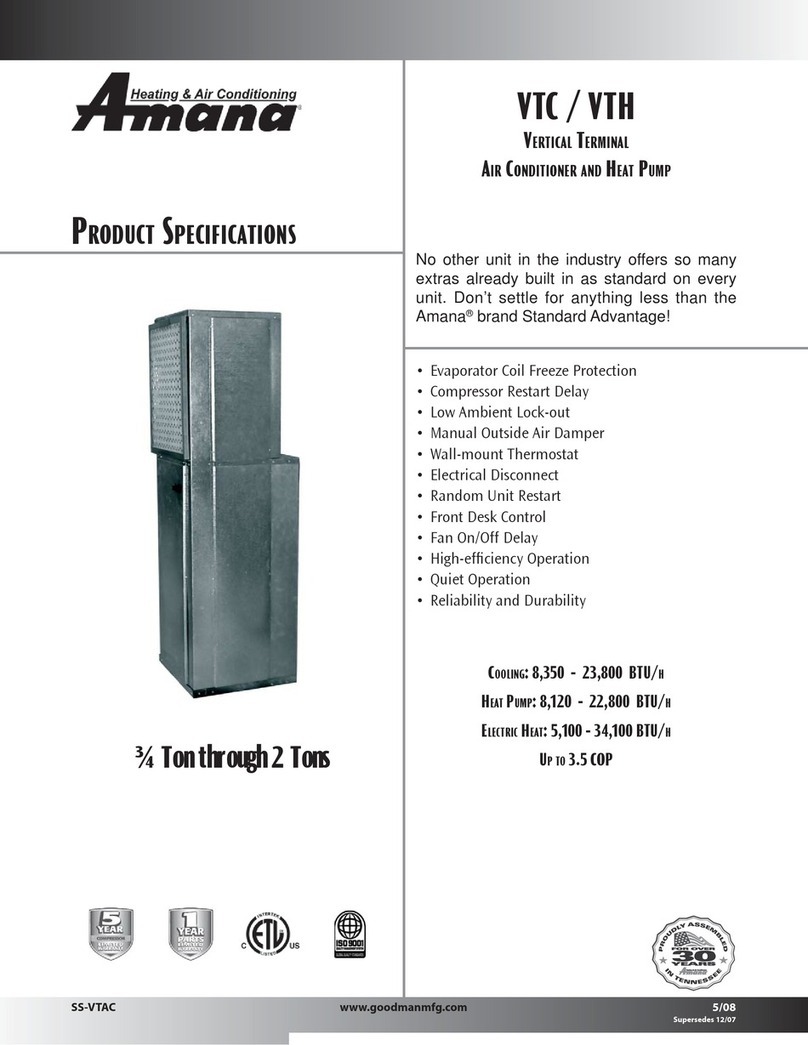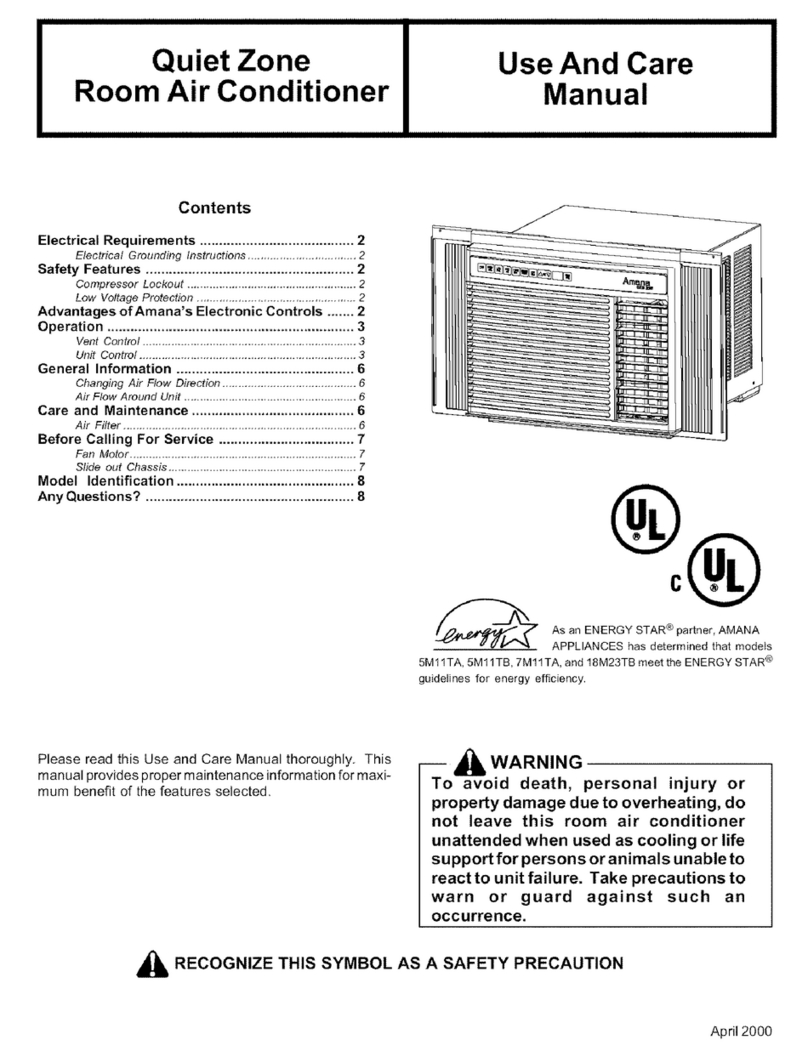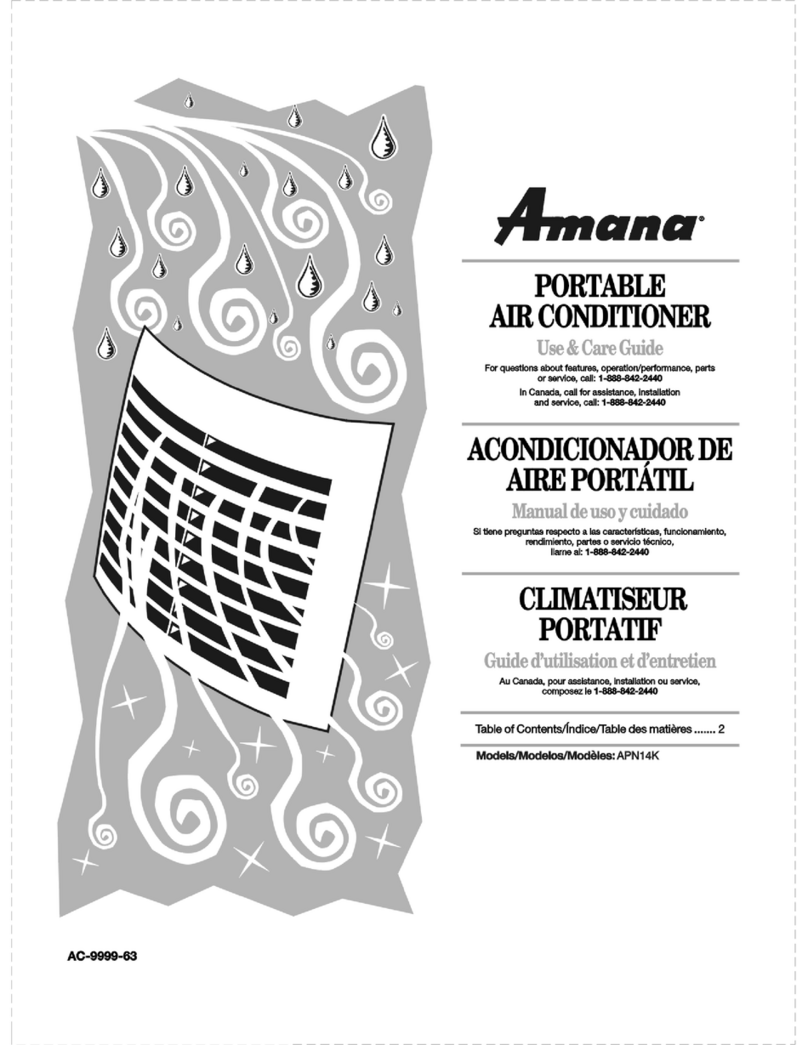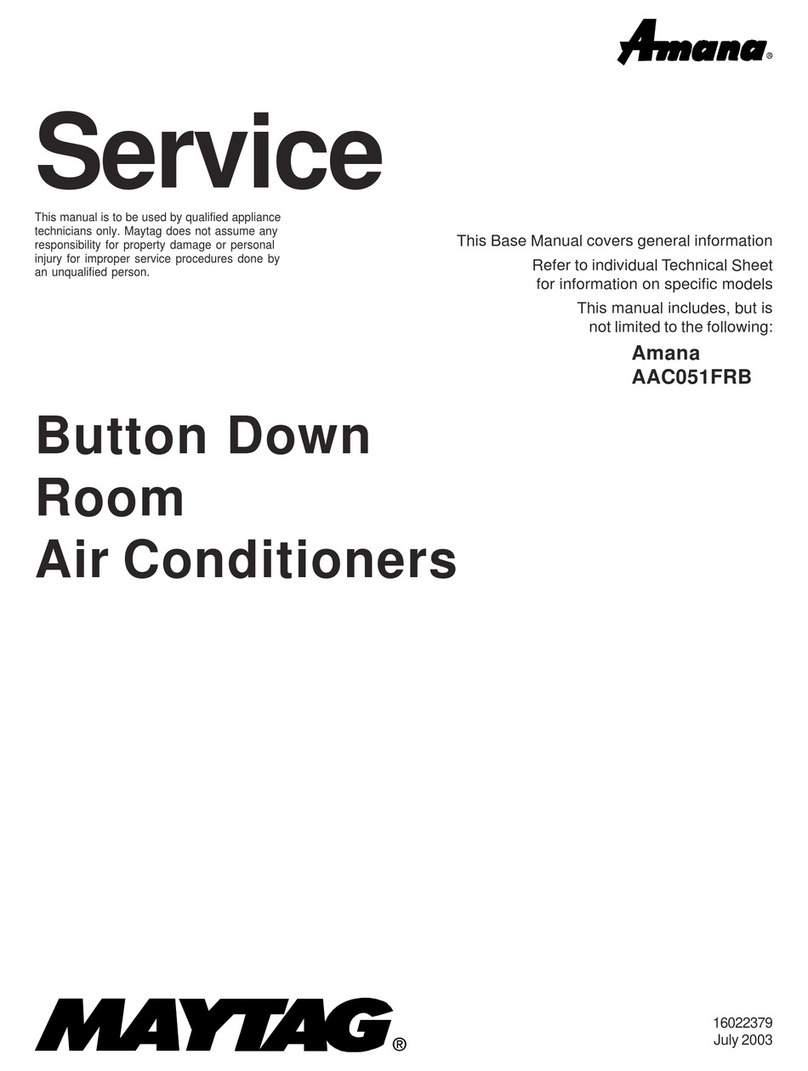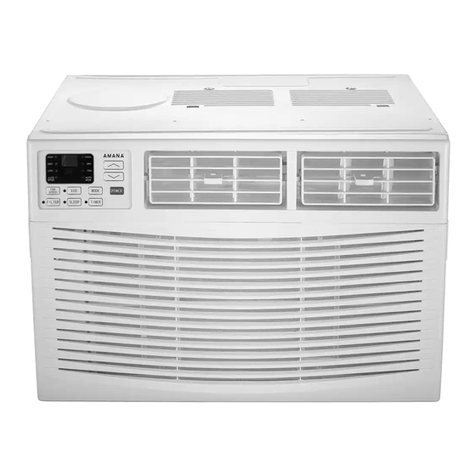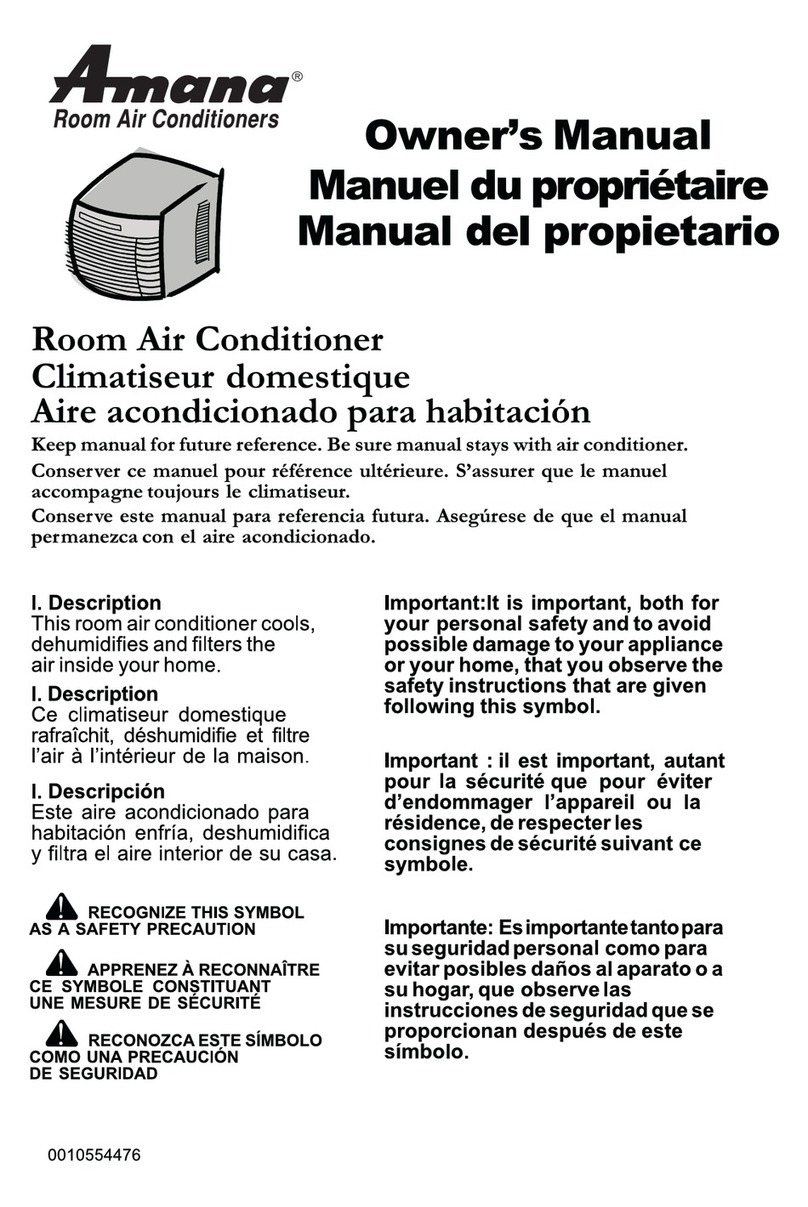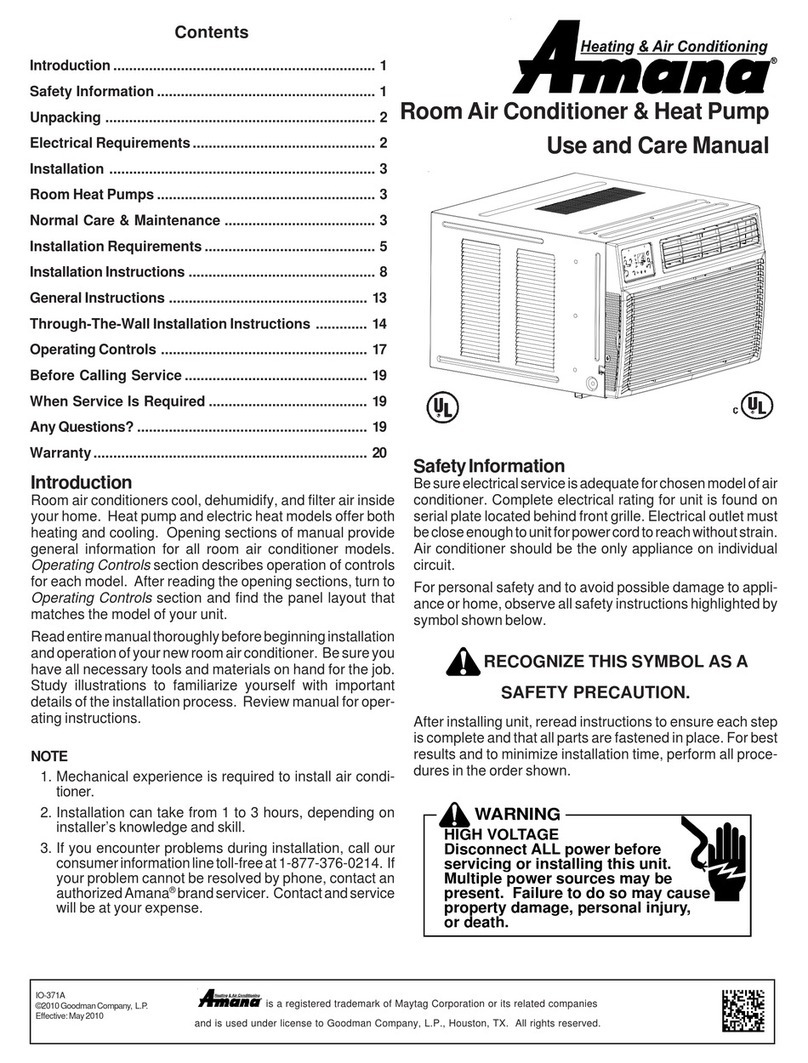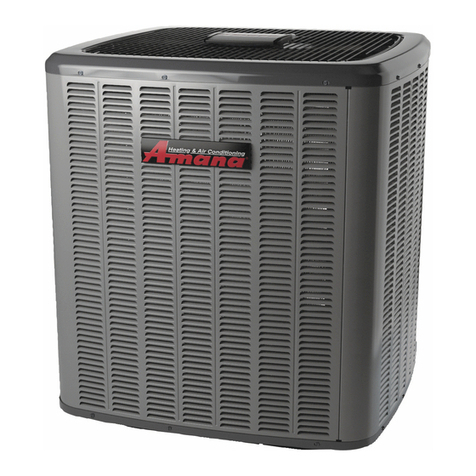
3
NEMA No. 5-15P NEMA No. 5-15R 125V-15AMP 115V
NEMA No. 6-15P NEMA No. 6-15R 250V-15AMP 230/208V rated
at 12 amperes or
less
NEMA No. 6-20P NEMA No. 6-20R 250V-20AMP 230/208V rated
over 12 amperes,
but not more than
16 amperes
NEMA No. 6-30P NEMA No. 6-30R 250V-30AMP 208V rated over
16 amperes, but
not more than
24 amperes
Unit Plug Receptacle Circuit Rating, Voltage
Type Required Breaker, Time Rating On
Delay Fuse Nameplate
ElectricalRequirements
GroundingInstructions
Thisapplianceisequippedwithathree-pronggroundingplug
forprotectionagainstpossibleshockhazards. Ifatwo-prong
wall receptacle is encountered, the customer is required to
contact a qualified electrician and have the two-prong wall
receptacle replaced with a properly grounded three-prong
wall receptacle in accordance with the National Electrical
Code.
Roomairconditionersaredesignedtooperateaccordingto
requirements on the nameplate and as shown in Table 1.
Fuseorcircuitbreakerratingsmustbeaccordingtothefuse
instructionlabelandasshowninTable1. Donotplugmodels
marked“UseonSingleOutletCircuitOnly”intoacircuitwith
anotherapplianceorlightfixture.
ReceptacleWiring
Receptaclewiring must beof adequate sizefor unit.Refer
tounitidentification plate forexactpowerrequirements.
Minimum size of wiring, based on power requirements, is:
Units up to 20 amps: 12gauge
20–30ampunits: 10gauge
LCDIorAFCIPowerCords
Underwriters Laboratories (UL) and the National Electric
Code (NEC) now require power cords that sense current
leakageandcanopentheelectricalcircuittotheunit. Inthe
event, the unit does not operate, check the reset button
locatedon ornear the headof thepower cord aspart ofthe
normaltroubleshootingprocedure.
Usecopperwireonly.Consumer’sresponsibilityistoprovide
proper and adequate receptacle wiring that conforms to all
applicable codes. All wiring should be installed by qualified
electrician.
Installation
Completestep-by-stepinstallationinstructionsarefurnished
withyourunit. Theseinstructionswillbefoundonaseparate
page included with this manual or in the mounting kit
assembly. Follow these instructions carefully. Keep these
instructionswiththismanualfor future reference. Your unit
willbe oneof thefollowing threedesigns:
•Unitwithawindowmountingkit
These models are designed for mounting though an
opening in a wall. These units can be adapted to
windowinstallationbyusingtheoptionalwindowmount-
ing kit supplied with your unit.
•Unitwithoutawindowmountingkit
No window mounting kit is supplied with the unit.
These models are designed for mounting through an
opening in a wall. These units can be adapted to
windowinstallationbypurchasinganoptionalwindow
mountingkit. Consultyourdealertochoosethekitthat
isappropriate for your model and installation.
RoomHeatPumps
Heatpumpsworkbymovingheatinsteadofcreatingit. Inthe
summer, the cool indoor coil absorbs heat from your room
andmovesitoutdoors,providingcooling. Inthewinter,heat
pumpsreversethisoperation. Byloweringthetemperature
of the outdoor coil below the outdoor temperature, the heat
pump absorbs the heat from outdoors and moves it inside
yourhouse. This heat transferringprocessisveryefficient.
Forexample,at45°Foutdoortemperature,aheatpumpcan
provide 2 ½ watts of heat for every watt of electricity it
consumes.
As outdoor temperatures drop, the heating capacity and
efficiencyoftheheatpumpdeclines. Attemperaturesbelow
45°F, it is likely that ice will form on the outdoor coil. Heat
pump units are designed to operate as a heat pump above
approximately 40°F. Below 40°F, these units switch auto-
matically from reverse cycle heat pump to auxiliary electric
heating. No defrost is required. There is no minimum
operatingtemperature.
NormalCareandMaintenance
Installing an air conditioner through a wall
requires extensive carpentry and/or mason-
ry experience. Thru-wall installations per-
formed by inexperienced or unqualified
individuals can result in costly damage to
home or result in equipment malfunction
that could cause property damage,
personal injury or death.
CAUTION

